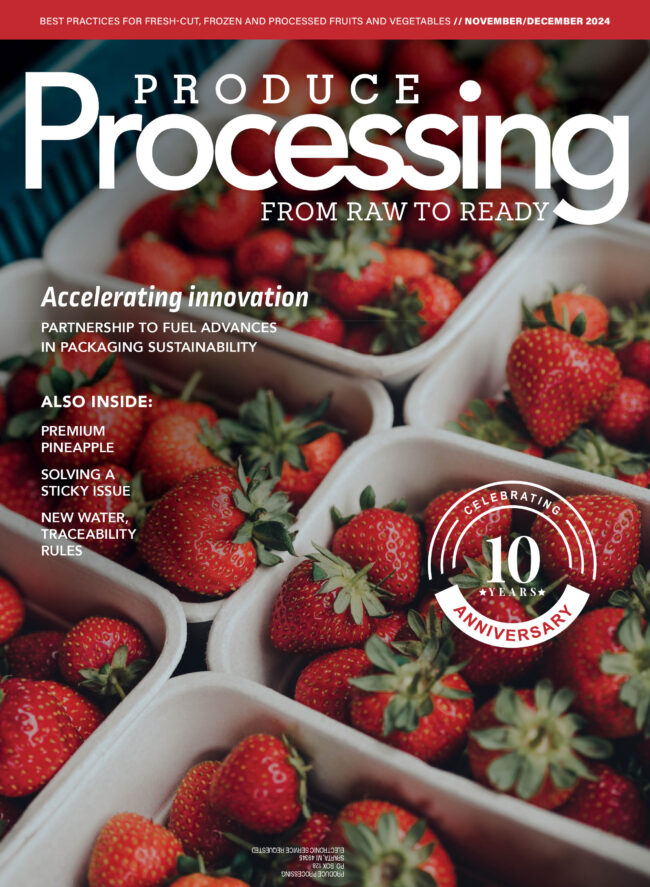FDA Issues Draft Guidance for the Safe Production of Fresh-Cut Produce
To minimize microbial food safety hazards common to the processing of most fresh-cut fruits and vegetables sold to consumers in a ready-to-eat form, the FDA has published a draft guidance document for producers of fresh-cut produce titled “Guide to Minimize Microbial Food Safety Hazards of Fresh-cut Fruits and Vegetables.”
“Fresh cut produce is the fastest growing sector of the fresh produce industry,” said Andrew von Eschenbach, acting FDA commissioner. “This document should help to improve safety by providing clearer guidance on how to reduce health hazards that are potentially introduced during the production process.”
Processing produce into fresh-cut produce increases the risk of bacterial contamination and growth by breaking the natural exterior barrier of the produce by peeling, slicing, coring, trimming or mashing with or without washing or other treatment before being packaged for consumption, according to the FDA.
This draft guidance discusses the production and harvesting of fresh produce and provides recommendations for fresh-cut processing in several areas:
1.Personal health and hygiene
2.Training
3.Building and equipment
4.Sanitation operations
5.Fresh-cut produce production and processing controls from product specification to packaging, storage and transport
The final chapters provide recommendations on recordkeeping and on recalls and tracebacks. The guide complements FDA’s Current Good Manufacturing Practices regulations by providing specific guidance on the processing of fresh-cut produce.
In the draft guidance, FDA recommends that processors encourage the adoption of safe practices by their partners throughout the supply chain, including produce growers, packers, distributors, transporters, importers, exporters, retailers, food service operators, and consumers, to ensure that the processor’s efforts will be enhanced. These practices include:
•Establishing a company policy that employees report any active case of illness to supervisors before beginning work and training;
•Training supervisors to recognize typical signs/symptoms of infectious disease;
•Maintaining the proper first aid to protect and cover any wound; and
•Not allowing an employee to work with any aspect of fresh or fresh-cut produce, processing equipment or tools until the wound has healed and/or the infectious disease has been treated.
The guidance also recommends that fresh-cut processors consider a preventive control program such as the Hazard Analysis and Critical Control Points (HACCP) system to build safety into the processing operations for fresh-cut fruits and vegetables. HACCP is a prevention-based food safety system designed to prevent, eliminate, or reduce to acceptable levels the microbial, chemical and physical hazards associated with food production.
According to the release, FDA believes awareness of the common risk factors discussed in this guidance and implementation of preventive controls determined by a firm to be appropriate to its individual operations will enhance the safety of fresh-cut fruits and vegetables.
Consumers can reduce their risk of illness from fresh-cut produce by following safe handling practices such as refrigerating the product after purchase; using only clean hands, utensils or dishes in preparing the product; and discarding the product when the “use by” date has expired.
More information on safe handling practices of produce can be found at http://portal.fightbac.org/pfse/toolsyoucanuse/phec/.
Written comments on the draft guidance may be submitted up to 60 days from the date it was published – March 1. Comments should be sent to FDA’s Dockets Management Branch (HFA-305), Food and Drug Administration, 5630 Fishers lane, Rm. 1061, Rockville, Md. 20852.
The draft guidance is available at http://www.cfsan.fda.gov/guidance.html.







